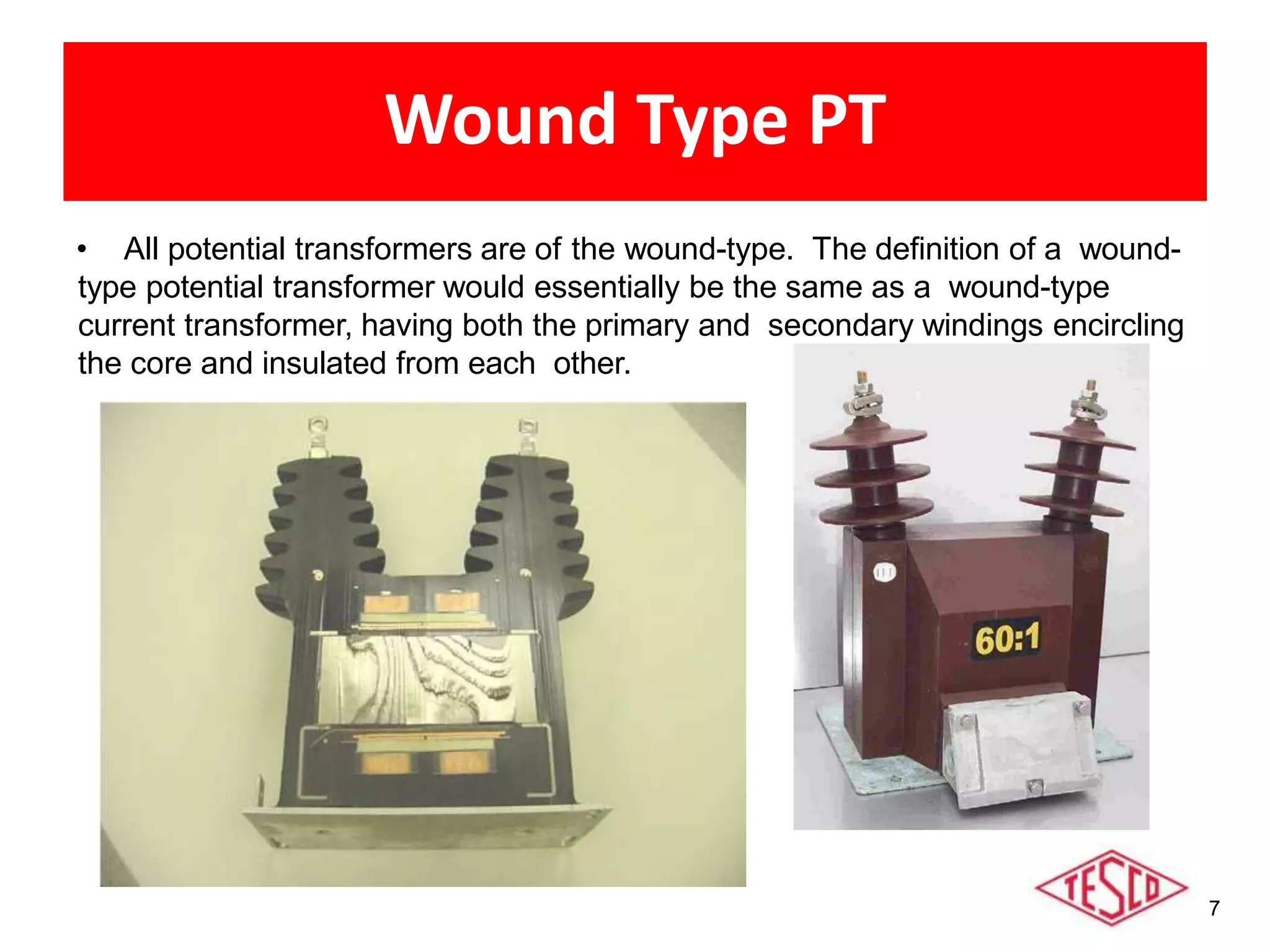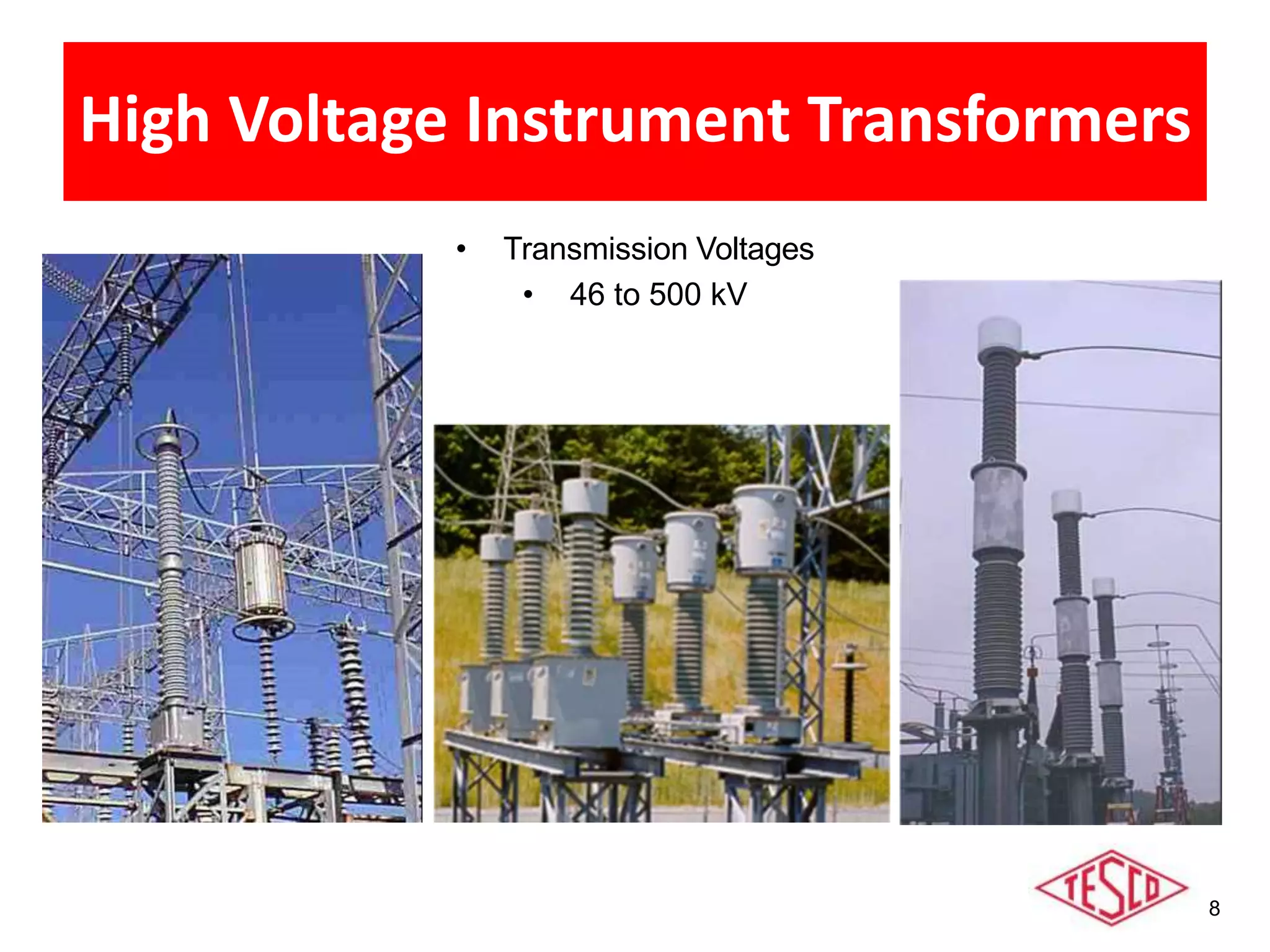The document provides a detailed overview of instrument transformers, specifically current transformers (CTs) and potential transformers (PTs), outlining their definitions, types, operational principles, and accuracy factors. It discusses the application and significance of different transformer types, their voltage ratings, and the implications of burden and accuracy in metering. Additionally, it emphasizes safety considerations, including grounding practices and the importance of accurately managing load conditions to prevent errors and equipment damage.


































































